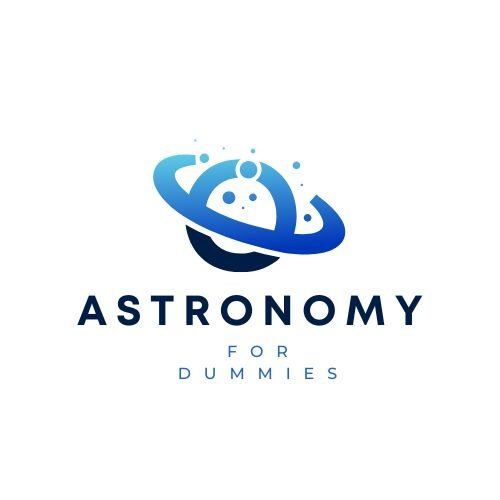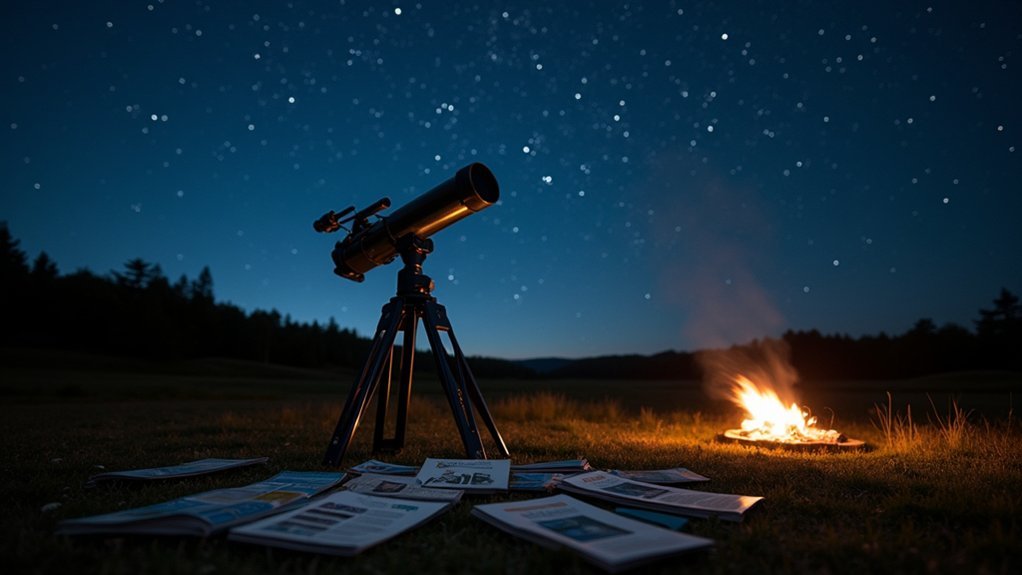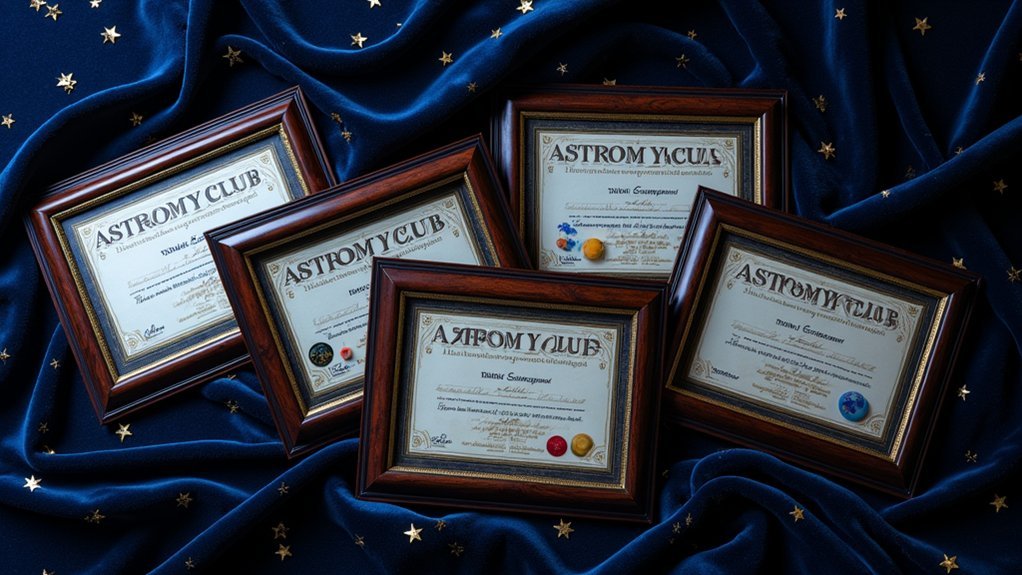Teaching moon phases effectively requires engaging approaches that combat misconceptions. You’ll find success with hands-on Styrofoam models, interactive moon calendars, and the StarDate website for verification. Try waxing/waning hand techniques, differentiated task cards, and prediction challenges that connect classroom learning to night sky observations. Don’t forget volleyball demonstrations and half-painted ping pong balls to visualize the Earth-Moon-Sun system. These practical methods transform confusion into clear understanding as students explore lunar patterns themselves.
10 Clever Moon Phase Teaching Tips That Work

When teaching lunar phases to students, finding engaging methods that stick can be challenging. Create a moon phase calendar using the StarDate website that highlights New and Full Moons, giving students tangible observation goals throughout the month.
Transform abstract concepts into hands-on Science Activities by using a styrofoam ball model of the Earth-sun-moon system. Let students physically manipulate the objects to see how positions affect lunar appearances.
Hands-on models bridge the gap between abstract astronomy and student understanding, making lunar phases tangible through physical manipulation.
Combat screen fatigue with creative projects like lunar phase storyboards where students illustrate and label each phase. Supplement learning with interactive games and task cards that accommodate diverse learning styles.
Organize group activities like the Volleyball Moon Phase demonstration to spark discussions about positioning and visibility, promoting collaborative learning while reinforcing these sometimes difficult astronomical concepts.
Debunking Common Moon Misconceptions First
Before diving into lunar phase lessons, it’s vital to clear up common misconceptions that might interfere with learning. Many students believe the Moon is only visible at night, when it’s actually observable during daylight hours too.
You’ll need to explain that the Moon doesn’t generate its own light but rather reflects sunlight, which creates its visibility in our sky.
Another misconception concerns the changing appearance of lunar phases. Students often think the Moon physically changes shape, when these phases result from the relative positions of Earth, Moon, and Sun.
Also clarify that the Moon always shows us the same side due to synchronous rotation.
Finally, remind students that weather conditions like cloud cover can affect Moon observation opportunities, so planning ahead is important when studying phases.
The Moon Calendar That Students Actually Complete

A successful moon observation project requires thoughtful planning to overcome the common challenge of low completion rates. When you make the assignment optional, students rarely participate, so structure is essential.
Print moon phase calendars for each student, highlighting key events like New Moon, First Quarter, Full Moon, and Last Quarter. Complement these calendars with resources like the StarDate website, where students can verify lunar phases for specific dates.
To help students understand the lunar cycle, incorporate hands-on activities that engage learners visually. The Styrofoam ball model effectively demonstrates why moon phases occur and helps students connect their observations to scientific concepts.
This combination of structured observation tools and interactive demonstrations creates a meaningful experience that students are more likely to complete throughout the lunar cycle.
Hands-On Styrofoam Ball Models That Clarify Confusion
Despite many classroom attempts to explain moon phases through diagrams and videos, students often struggle to grasp the three-dimensional relationship between Earth, the moon, and the sun.
Styrofoam ball models offer a simple yet effective hands-on solution. Have your students mount a 2-inch ball on a skewer to represent the moon, then use a lamp as the “sun.” As they move around the light source, they’ll observe firsthand how illumination angles create different moon phases.
This tactile approach helps students identify the exact positions that create full and new moons. They’ll connect abstract concepts with concrete observations, reinforcing their understanding of lunar cycles.
The low-cost materials make these teaching tools accessible for any classroom, transforming confusion into clarity through active experimentation rather than passive learning.
StarDate Website: Your Digital Moon Phase Assistant

Numerous teachers have discovered that digital tools can revolutionize astronomy education, and the StarDate website stands out as an exceptional resource for teaching lunar phases. You’ll find interactive displays that show precise moon phases for any date, making lunar pattern tracking effortless.
| StarDate Feature | Teaching Benefit |
|---|---|
| Interactive Moon Calendar | Allows students to visualize daily changes |
| Printable Phase Charts | Provides tangible references for key phases |
| Beginning/End Month Comparisons | Enhances observation skills |
| Prediction Tools | Encourages critical thinking |
Your students can record observations and make predictions about upcoming phases, deepening their engagement with astronomical concepts. The platform aligns perfectly with NGSS standards across grade levels, making it an invaluable companion for teaching complex lunar concepts in an accessible, digital format.
The Ping Pong Ball Method for “Aha!” Moments
When abstract lunar concepts suddenly become clear, students experience genuine moments of discovery that transform their understanding. The Ping Pong Ball Method creates these breakthrough moments by using half-painted balls to visually demonstrate moon phases in a tangible way.
You’ll see engagement soar as students manipulate these hands-on models around a light source, rotating a black poster board with a hole to simulate Earth’s perspective of lunar visibility. This interactive model encourages collaboration as students physically observe how the moon’s position affects its appearance.
Rather than passively learning about lunar cycles, your students will actively participate in demonstrating the mechanics behind each phase. The method’s simplicity triggers significant “aha!” moments that reinforce key concepts and improve retention through experiential learning.
Waxing and Waning Hand Techniques for Retention
Beyond the visual impact of ping pong ball models, your students will benefit from incorporating their own bodies into moon phase learning.
Have them use their left hand for “wax on” circular motions and right hand for “wane off” movements to physically demonstrate the progression of moon phases.
The position of thumb nails provides an excellent visual cue—right side illumination indicates waxing (increasing light), while left side shows waning (decreasing light).
Encourage students to quiz each other: “Is this moon full or new?” and “How do you know it’s waxing, not waning?”
This hands-on approach enhances retention through movement.
Solidify understanding by having students teach peers using these techniques, creating a collaborative environment where moon phases become intuitive rather than abstract concepts.
Interactive Notebooks That Transform Understanding
Four essential components make interactive notebooks powerful tools for moon phase instruction. First, they create a personalized space where you’ll match vocabulary words with corresponding lunar positions, reinforcing terminology through hands-on engagement.
Interactive notebooks transform moon phase learning by creating personalized spaces where terminology connects with lunar positions through hands-on engagement.
Second, students craft labeled diagrams that demonstrate their understanding while encouraging creativity and summarization skills.
Third, visual elements transform abstract lunar concepts into concrete representations. By incorporating images and charts, you’ll help students make meaningful connections that text alone can’t achieve.
Finally, these notebooks support differentiated instruction by accommodating various learning styles. The organized format allows for easy reference during review sessions, making moon phases accessible to diverse learners. This structured yet flexible approach creates an ongoing resource that grows with student understanding.
Moon Phase Prediction Challenges With Real-Time Verification
You’ll energize your astronomy lessons by challenging students to forecast tomorrow’s moon phase and verify their predictions against the actual night sky.
Create excitement by establishing a weekly “Moon Phase Challenge” where students record their predictions and then check accuracy using resources like StarDate or direct observation.
Enhance this experience with Styrofoam ball models that help students visualize the mechanics behind lunar phases before they confirm their understanding through real-time verification.
Forecasting Tomorrow’s Moon
How can students truly internalize moon phase concepts? Challenge them to forecast tomorrow’s moon appearance. This simple yet powerful exercise connects abstract lunar dynamics to observable reality, making the science tangible.
Have your students make specific predictions about what tomorrow’s moon will look like—its shape, position, and visibility time. Encourage them to document their reasoning based on the current phase and orbital patterns they’ve learned.
The next day, ask them to observe the actual moon and compare it with their predictions.
For verification, direct students to moon phase calendars on websites like StarDate. This real-time feedback loop strengthens their understanding of cyclical patterns and positions relative to Earth and sun, turning passive learning into active discovery through practical application.
Real-Sky Verification Activities
Real-sky verification activities build upon prediction exercises by establishing a systematic process for moon observations. These activities strengthen students’ observational skills while deepening their understanding of lunar cycles.
- Challenge students to predict tomorrow’s moon phase using resources like the StarDate website.
- Have them document both predictions and actual observations in a moon journal.
- Discuss how weather and visibility conditions affect observation capabilities.
- Incorporate technology such as moon phase calculators for immediate feedback.
- Connect observations to lunar calendar predictions to reinforce conceptual understanding.
When implementing these activities, you’ll notice students become more attentive to details in the night sky. Their growing ability to accurately predict and verify moon phases demonstrates a practical application of astronomical concepts, making abstract information concrete through real-world verification.
Task Cards for Differentiated Moon Learning
Task cards offer you the perfect solution for teaching moon phases at multiple skill levels, letting each student progress at their own comfortable pace.
You’ll find these self-paced discovery cards particularly effective for addressing diverse learning needs while maintaining engagement across your classroom.
Create sets with varying complexity—from basic phase identification cards for beginners to advanced prediction challenges for your more confident learners.
Multiple Skill Levels
When teaching students about lunar phases, differentiated instruction becomes essential as children process astronomical concepts at varying rates. Task cards provide an excellent solution for upper elementary Science Teaching by allowing you to engage diverse learners simultaneously.
Design your moon phase task cards with multiple skill levels by incorporating:
- Basic identification cards for beginners to match moon phase names with images
- Prediction challenges for mid-level learners to sequence phases correctly
- Explanation tasks requiring students to describe why phases occur
- Collaborative activities where pairs work together to solve lunar puzzles
- Extension options for advanced students to connect moon phases with tides or cultures
You’ll find that these differentiated instruction materials help ELL and SpEd students access content while challenging your advanced learners—all within the same activity structure.
Self-Paced Discovery Cards
Self-paced discovery cards transform your lunar curriculum by putting exploration directly in students’ hands.
These task cards offer visual representations, vocabulary matching, and prediction activities that reinforce moon phases while accommodating diverse learning styles.
You’ll find these versatile tools work equally well as classroom stations, homework assignments, or assessment opportunities.
Create cards with varying difficulty levels to guarantee every student engages meaningfully with the content—from beginners identifying basic phases to advanced learners predicting specific dates of future phases.
Monitor understanding by reviewing completed cards, identifying which concepts need reinforcement.
The beauty of this approach is how it develops independent observation skills while students progress at their own pace.
When learners take ownership of their lunar exploration, they’re more likely to retain and apply this knowledge.
Frequently Asked Questions
How to Teach Phases of the Moon?
You’ll teach moon phases effectively using Styrofoam ball models, moon journals, ping pong ball mobiles, interactive games, and digital resources. These hands-on activities help students visualize how Earth-sun-moon positions create different illumination patterns.
How to Explain the Phases of the Moon to a Child?
You can explain moon phases to a child by using a ball and flashlight. Show them how the moon doesn’t make light, but reflects the sun’s light as it moves around Earth.
What Is the Easiest Way to Memorize the Moon Phases?
You’ll easily memorize moon phases with the acronym “New First Full Last.” Create visual associations for each phase, like a growing smile for waxing crescent. Track the actual moon nightly to reinforce your learning.
What Is the Mnemonic Device for the Phases of the Moon?
You can remember moon phases with “N-C-F-G-F-G-Q-C,” which stands for “New, Waxing Crescent, First Quarter, Waxing Gibbous, Full, Waning Gibbous, Last Quarter, Waning Crescent.” It’s a simple way to track the moon’s cycle.
In Summary
You’re now equipped with ten effective techniques to make moon phases click for your students. By addressing misconceptions, utilizing hands-on models, and incorporating interactive challenges, you’ll transform abstract concepts into tangible understanding. These strategies don’t just teach moon phases—they build scientific thinking skills that extend beyond astronomy. Try implementing one method tomorrow, and you’ll see immediate improvement in your students’ cosmic comprehension.





Leave a Reply